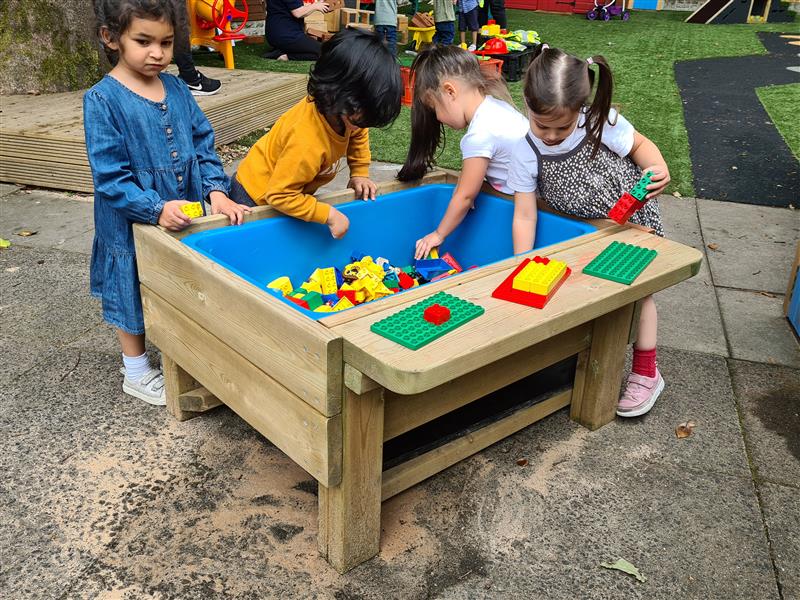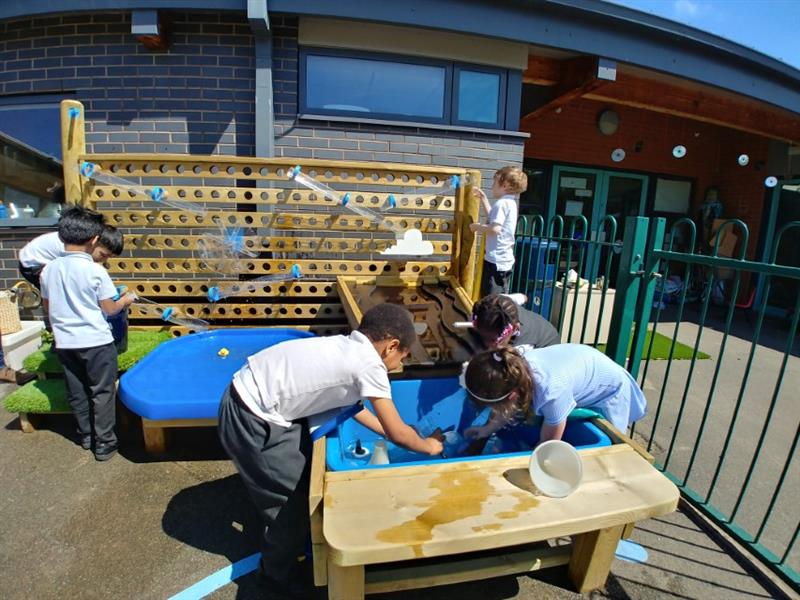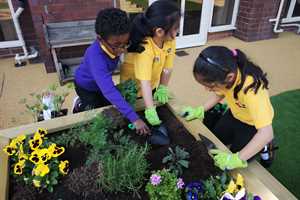
Outdoor Learning and Play
How Small World Play Can Support Children's Development!
I often see children completely absorbed in small world play and for some it is certainly their favourite type of activity. They may be moving toy vehicles around the construction site, getting figures ready for night time in the doll’s house or preparing for a teddy bears picnic. Small world play is essentially play on a small scale. Different scenarios and particular environments can be presented allowing pupils to explore and make sense of the world around them.
Small world play transports children to another space and time entirely. They may learn about important people, animals and places and spaces on our planet and beyond. Pupils develop their creativity through fantasy play involving fairies, dragons, unicorns and witches. Children may act out scenes inspired by their own daily life or they can create new dramatic situations and tales.
Through small world play children are provided with opportunities to practise ideas, concepts and skills. They are given freedom to play creatively and imaginatively becoming masters of their mini world. Pupils will learn to take risks, solve problems and make mistakes in a non-threatening environment.
Interacting With Others
Small world activities can be accessed by every child in a setting. Pupils can play alone when engaging with small world resources or alongside others. They will learn to cooperate as they communicate, sharing their ideas and feelings. Investigation of small world activities can lead to effective communication as children work together to solve problems. Sharing, turn-taking and negotiation skills are developed as pupils investigate different objects and materials.
For some pupils’ small world play allows them to share their thoughts and feelings more easily. Toy figures and animals can help pupils to convey their emotions when playing in role.
Planning for Small World Play
Small world activities can take place in both the indoor and outdoor classroom. They may be used as a starting point for children to develop their own ideas, naturally extending and building on children’s knowledge. Pupils will gain different skills and knowledge from small world activities based on their ability and starting points.
Adults can work alongside children to model, respond to and extend ideas. Observation of small world play allows practitioners to recognise learning and plan for next steps.
Small world play can be topic based or can be used as an exploration activity. Resources can reflect a variety of cultures, religions and diverse communities helping children to recognise similarities and differences between themselves and others.
Developing Skills
Small world play helps to develop children’s fine motor skills as they handle tools, objects, construction and malleable materials with increasing control. Mathematical concepts such as size, pattern, position and sorting can be explored through fun and engaging play.
Product Spotlight
Small world activities help children to maintain attention and concentrate for longer periods. Important language skills are developed as pupils use their imagination to tell stories and create role-play scenarios. Practitioners can help to extend children’s vocabulary by exploring the meaning and sounds of new words and encouraging learners to clarify their thinking and share their ideas and feelings.
Setting Up for Small World Play
Small world resources are small scale which allows them to be easily moved and set up in different areas of the indoor and outdoor classroom. Resources can be placed in a tray or a box, on a cable reel, on a shelf or in a suitcase. Pentagon’s Tuff Spot Tables are the perfect place for small world play as there is plenty of space for a group of children to engage in play and resources can be stored underneath when not in use.
A wealth of resources can be used when creating small world activities such as educational toys, figures, vehicles, natural materials, recycled materials, play silks, scarves and fabric pieces. Sensory elements such as water, sand, rice and play dough can enrich small world set ups.
Choosing an interest of the children is a great starting point for small world play as it allows children to use their own knowledge and ideas and to build upon that interest.
Here are some of my favourite small world play set ups which may be good starting points to aid planning. The sky really is the limit with small world play scenes! Often inspiration will come from a great text, a new resource and the children’s own ideas and imagination.
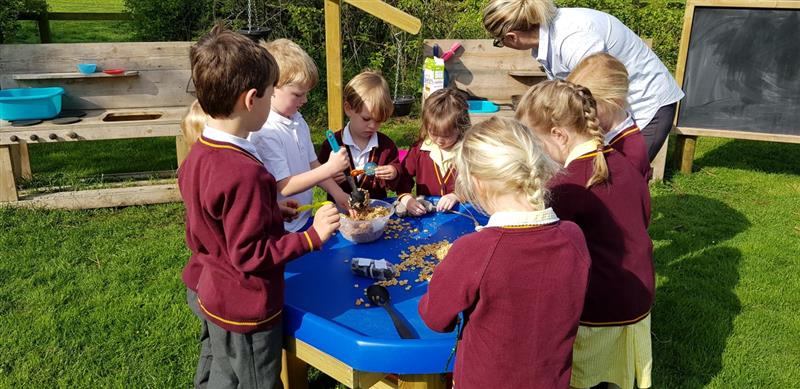
The Land of Elves and Fairies
Resources:
- Pentagon Play Tuff Spot Table
- Play Dough
- Glitter and Sequins
- Fairy and Elf Figures
- Colourful, Sparkly Material
- Other available props such as a castle, trees, mushrooms, a bridge. netting, a troll, animal figures
Exploration:
Pupils can use the available resources to make their own fairy land. They can be encouraged to use the natural environment to add other materials such as leaves, twigs, pebbles and feathers.
Children can create their own mythical stories. They could be given a story starter and asked to complete the tale.
Adult Initiated Activities:
Pupils could be encouraged to add labels to their Fairy land such as ‘The Terrible Troll Bridge’ or ‘Twinkle’s Garden of Roses.’
Based on texts read, children could orally retell a story using correct sequence and elements such as main character, opening, problem and resolution.
Time for a Tea Party
Resources:
- A selection of small cuddly toys or puppets such as bears, foxes, rabbits or squirrels.
- A large tuff tray
- Fabric to cover the tray
- A doll’s tea set with plastic or wooden food.
- Music player
- A selection of instruments
Exploration:
Allow children to explore the tea party items independently. They may like to add new animals or food items which they find or make.
Sing songs together such as ‘The Teddy Bears Picnic.’
Pupils can experiment with different instruments which may enhance their play.
Adult Intiated Activities:
Ask pupils to join in with some action songs such as ‘Teddy bear, teddy bear.’
Children could make up their own songs about the animal tea party using instruments.
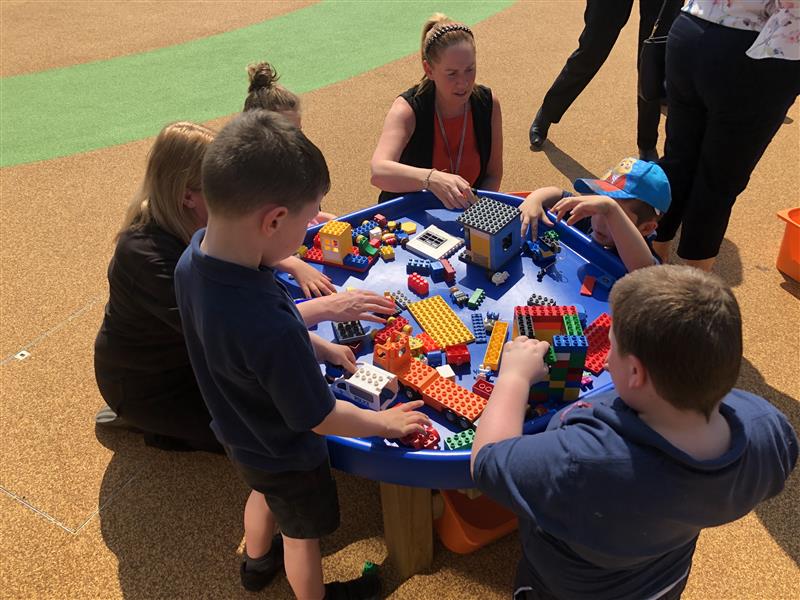
Deep Sea Divers
Resources:
- Pentagon Water Table or Tuff Spot Table
- Water with food colouring and glitter added
- Mermaid and diver figures
- Sea creature figures
- Fish tank ornaments
- Shells and Pebbles
Exploration:
Ask children to create their own ‘Water World’ and discuss the different stories and scenes they could invent.
Encourage children to investigate the objects and materials making use of their senses.
Play some ‘sea themed’ music such as calming or thrashing waves whilst children play.
Adult Intiated Activities:
Read a selection of under the sea themed books such as, ‘Somebody Swallowed Stanley’ ‘Tiddler’ and ‘The Rainbow Fish’ children could retell the tales or create versions of their own.
Pupils could use descriptive language to describe the sea during different weather conditions.
A selection of litter (recycled materials) could be added to the tray which children are required to fish out with nets. – Environmental links could be made.
It's A Bug's Life
Resources:
- Pentagon Planter (partially planted and covered with compost)
- Large logs, sticks, pebbles, leaves, moss and wooden discs.
- Plastic insect toys (realistic versions)
- Magnifiers
- A selection of non-fiction books and posters.
Exploration:
Let the children freely explore the habitat and the insects and encourage them to identify the creatures using magnifiers and information books.
Adult Initiated Activities:
Count, sort and classify the insects according to colour, size, number of legs and wings etc.
Go on a Bug Hunt in the school grounds or local nature area. Note insects found and take photographs.

Construction Site
Resources:
- Pentagon Sliding Sandpit or Tuff Tray with sand added
- Stones and pebbles
- Small trucks, diggers and cranes
- Small world people
- Construction bricks
- Small spades, trowels, buckets
- Construction books with build ideas.
Exploration:
Observe as children dig and scoop, make heaps and holes, bury and uncover.
Construction bricks can be used to make walls and structures and pupils can experiment by adding water to sand.
Adult Initiated Activities:
Explain to the children how the different vehicles work. Practise filling buckets half way and to the top.
Pupils could make STOP and GO signs using lolly sticks and card.
Count bricks when building towers and discuss the types of materials builders may use and their properties.

Marvellous Mud at the Pig Farm
- Pentagon Mud Box
- Compost
- Access to water
- Plastic pig figures
- Miniature toy fences, troughs and carts
Exploration:
Inspired by the book ‘Portly Pig’ by Axel Scheffler encourage children to add water and explore this messy play small world.
Can they describe the sound, smell and texture of the mud?
Sing ‘Jumping Up and Down in a Muddy Puddle’ song together.
Adult Intiated Activities:
Talk about farm animals and their young. Practise using the correct names and matching pictures of animal families.
Create some muddy footprints artwork by splashing the toy pigs in muddy puddles and printing on to paper.
Three Billy Goats Gruff
- Pentagon Play Bridge Walkway or a Tuff Tray
- Pebbles, twigs, sticks and leaves
- Blue fabric to place under the bridge to create a river
- Three different sized goat figures and a troll
Exploration:
Read different versions of the known tale and ask pupils to identify similarities and differences.
Encourage children to act out the known version of the traditional tale and their own new versions.
Perhaps different pupils could take turns to be the narrator at different points of the story.
Adult Initiated Activities:
Make masks and costumes and ask the children themselves to role play the story.
Create a ‘Wanted’ poster for the missing troll using descriptive adjectives.
Engagement with small world resources helps children to gain control of intricate movements whilst developing spatial awareness and reasoning. Small world play allows pupils to take ownership of their learning allowing confidence and self-esteem to flourish. New vocabulary and rich language can be introduced to pupils in meaningful contexts where children can make full use of their senses.
It is incredible to observe children as they play with and explore miniature worlds where learning possibilities can be endless. Small world play should be a key feature in EYFS classrooms as it can encompass all of the EYFS areas of learning.



.jpg)
